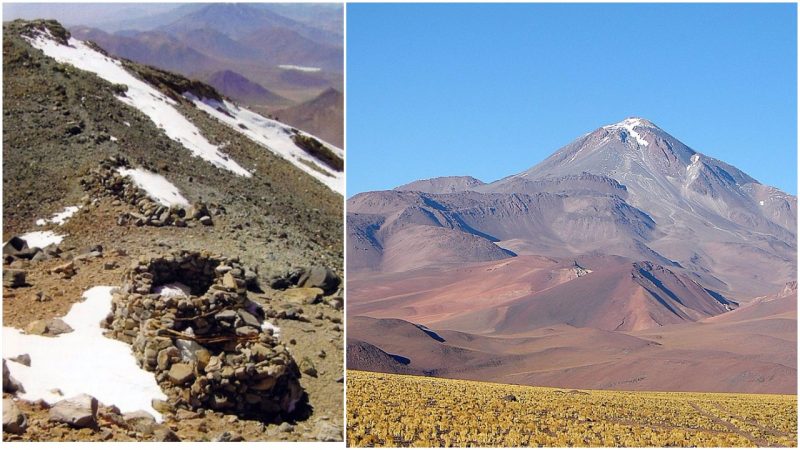The largest mountain range in South America, the Andes, still holds many mysteries about the people who once lived there. The Inca Empire, which stretched through parts of today’s Peru, Ecuador, Bolivia, Argentina, Chile, and Colombia, held great respect for the summits of the Andes, as the almost unapproachable mountains were regarded as sacred.
In 1999, a team of archaeologists led by Dr. Johan Reinhard managed to overcome horrendous weather conditions and excavate a trio of mummies at one of the mountain tops called Llullaillaco in northwestern Argentina―all three of whom were incredibly well preserved even though they were more than 500 years old.
The altitude of more than 22,110 feet and the freezing temperature of an average of 9 °F played a tremendous role in preserving the bodies, as did the dry climate of the Atacama desert that surrounds the mountain.
The discovery was huge because it provided deeper insight into the Incan culture, which remains one of the least examined South American indigenous civilizations. The only known Incan writing system, called Quipu, is yet to be fully deciphered, unlike the Mayan script, thanks to which their culture is better understood today.
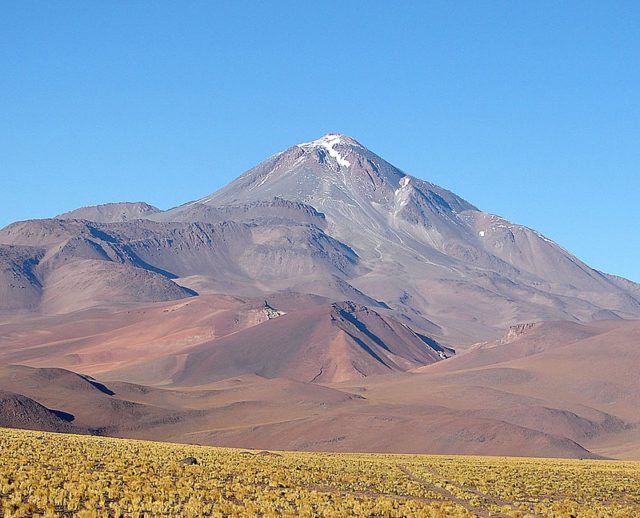
On top of that, the Spanish conquistadors left very little trace of the Incas existence after they colonized the city of Cusco, the Incan imperial capital, in 1534. They replaced many of the indigenous buildings with convents and military barracks.
Despite the scarce sources, it is well known about the Incas that peaks such as Llullaillaco were used as grounds for human sacrifices in rituals intended to ensure a good harvest, prevent natural disasters, or give a blessing to new emperors of the vast Incan realm.
So the three bodies found frozen in 1999 were most definitely part of a sacrificial rite that took place in the Andes in the 16th century.
The mummies found there were, in fact, children―the oldest of them being between 13 and 15 years of age―who spent the last year of their lives preparing for their role in the religious ceremony. A biochemical analysis of the hair of the oldest mummy, dubbed the Maiden of Llullaillaco, provided the details of the preparation process.
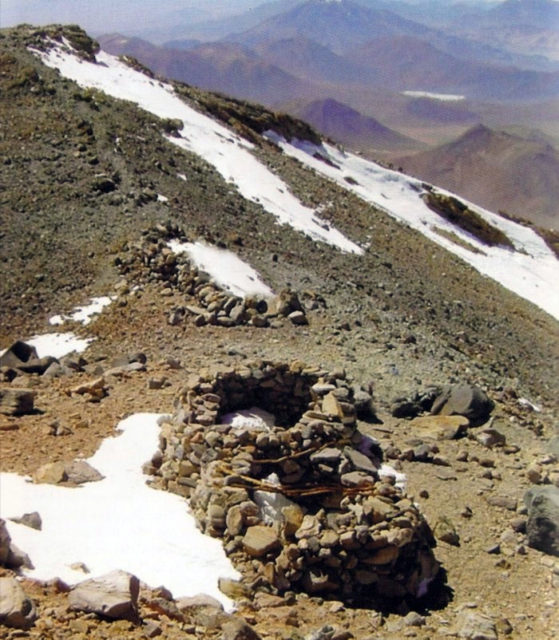
It included a special diet and regular doses of coca leaves (from which cocaine is derived), intended both to sedate the future victims as well as to initiate them into another kind of ritual, as coca and its mind-altering effect was a regular part of the religious life of Incas. Another ingredient found through analysis of the bodies was chicha alcohol, derived from corn.
The children were most likely taken from their parents and placed under special supervision by the priestesses of the empire. The ritual of sacrifice was state-sponsored, for the Incan religion relied on human sacrifice as a guarantee of progress and security.
Seen through the lens of the Incas, the sacrifice would be interpreted as an honor, but the process obviously needed more practical elements of control, as the presence of psycho-stimulants confirms.
Reaching the summit of Llullaillaco was not an easy task then, and it isn’t today. Children from all over the Incan Empire would be taken on these sacrificial pilgrimages on various different mountains, where they would be placed in a tomb and either left to die by freezing or murdered by force.
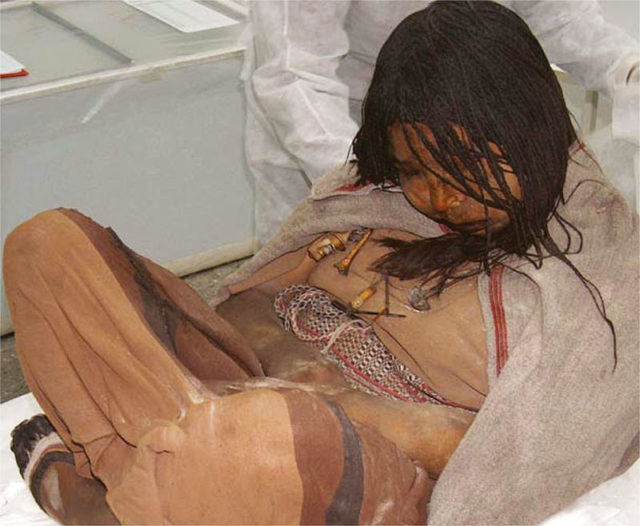
Apart from the Maiden, the two other bodies discovered in the Llullaillaco tomb were of a younger girl, aged six, and a boy of similar age. The oldest one apparently held a special place among them, for she was found with elaborately braided hair, wearing a feathered headdress on her head and surrounded by a number of artifacts placed on a cloth that was draped over her knees.
She was discovered sitting in a cross-legged position, contrary to the boy, who was tightly wrapped in a blanket, which the autopsy later confirmed caused suffocation. The other young girl received a similar treatment to the Maiden, but with fewer decorations, which indicates that her relevance was secondary.
Well after her death, lighting struck her corpse, damaging her face and part of her shoulder. Due to this particular coincidence, she was nicknamed the Lightning Girl.
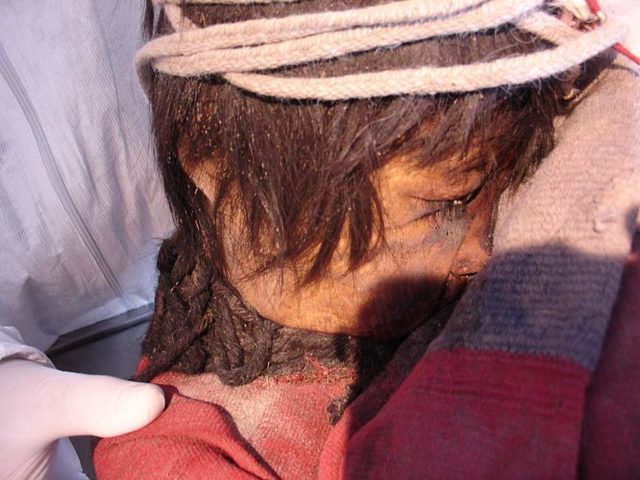
What remains fascinating is the degree to which the mummies are preserved. Alan Wilson, an archaeologist and forensic scientist from Bradford University, was left stunned after witnessing the three bodies. “This isn’t a desiccated mummy or a set of bones. This is a person; this is a child. And this data that we’ve generated in our studies is really pointing to some poignant messages about her final months and years.”
A new analysis in 2012 concluded that the Maiden of Llullaillaco was infected by a virus that has been long extinct. Due to the preservation of her body, the lung disease similar to tuberculosis stayed with her to this day and is now being used to discover more about the diseases of the past and of that particular region.
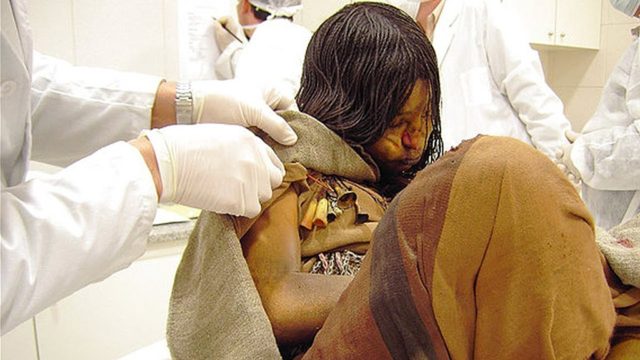
A team of medical scientists has concluded that the discovered virus could be put to use in studying other similar diseases such as the Spanish Flu, which nearly decimated the European population in a pandemic which lasted from 1918 to 1920.
Angelique Corthals of the John Jay College of Criminal Justice in New York, who led the research team, stated,”Our study opens the door to solving many historical and current biomedical and forensic mysteries, from understanding why the plague of 1918 was so lethal, to finding out which pathogen is responsible for death in cases of multiple infections.”
Corthals also pointed out that the significance of this study goes far beyond the historical value―it enhances the knowledge that could be used in the emergence of new diseases, or re-emergence of the ones thought extinct.
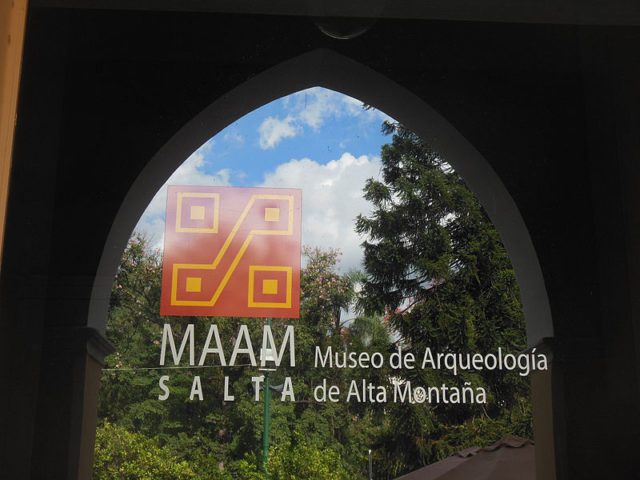
Even though the discovery of the mummies has proven revelatory in many aspects, a veil of controversy surrounds it. There are descendants of the Inca people who have expressed their belief that exhumation and display of the bodies are sacrilege and a gesture of great disrespected towards their culture.
Rogelio Guanuco, the leader of the Indigenous Association of Argentina, stated on the issue that “Llullaillaco continues to be sacred for us. They should never have profaned that sanctuary, and they should not put our children on exhibition as if in a circus.”
Even though the three mummies of Llullaillaco remain exhibited in the Museum of High Altitude Archaeology in the Argentine city of Salta, agreements were made to stop further excavation of tombs in the High Andes area.
